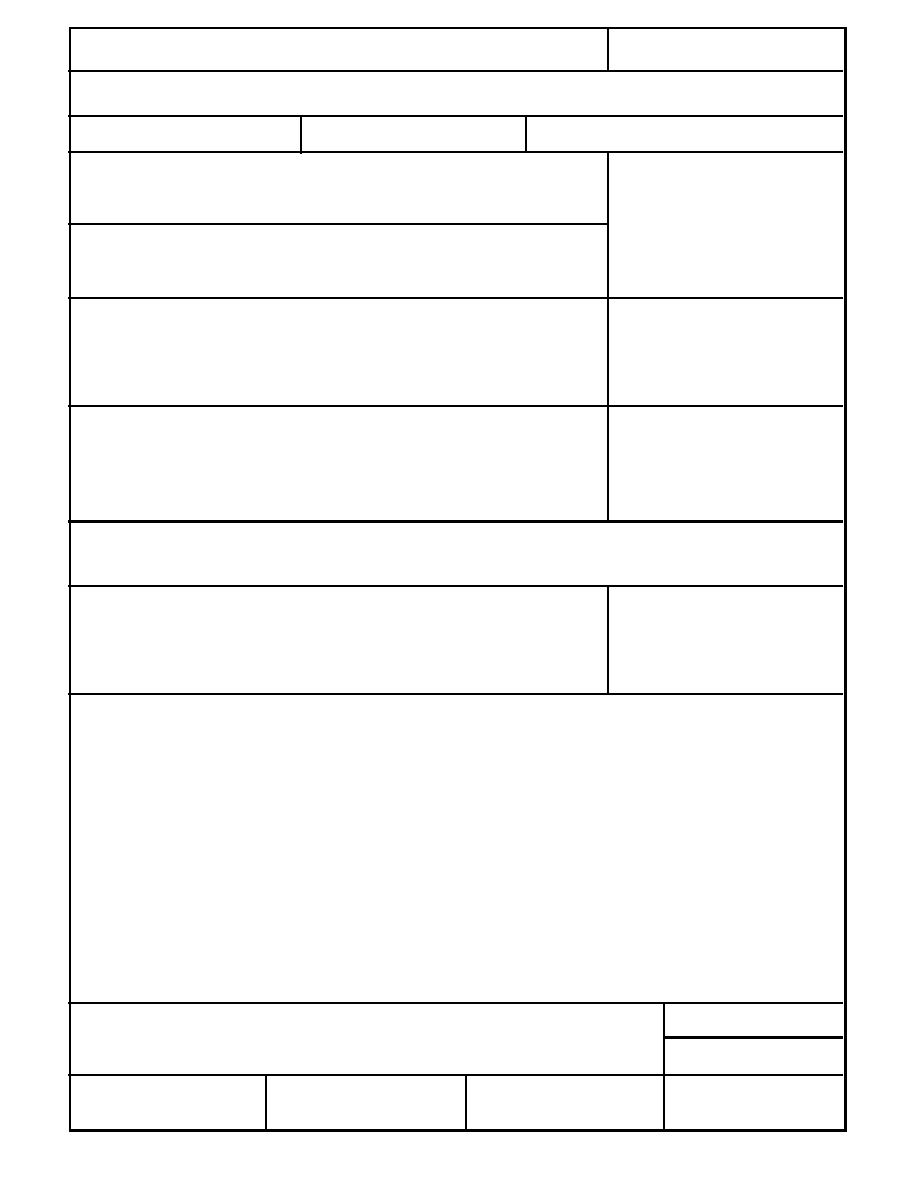
Form Approved
REPORT DOCUMENTATION PAGE
OMB No. 0704-0188
Public reporting burden for this collection of information is estimated to average 1 hour per response, including the time for reviewing instructions, searching existing data sources, gathering and
maintaining the data needed, and completing and reviewing the collection of information. Send comments regarding this burden estimate or any other aspect of this collection of information,
including suggestion for reducing this burden, to Washington Headquarters Services, Directorate for Information Operations and Reports, 1215 Jefferson Davis Highway, Suite 1204, Arlington,
VA 22202-4302, and to the Office of Management and Budget, Paperwork Reduction Project (0704-0188), Washington, DC 20503.
1. AGENCY USE ONLY (Leave blank)
2. REPORT DATE
3. REPORT TYPE AND DATES COVERED
October 1997
4. TITLE AND SUBTITLE
5. FUNDING NUMBERS
Decontaminating Materials Used in Groundwater Sampling Devices
6. AUTHORS
Louise V. Parker and Thomas A. Ranney
7. PERFORMING ORGANIZATION NAME(S) AND ADDRESS(ES)
8. PERFORMING ORGANIZATION
REPORT NUMBER
U.S. Army Cold Regions Research and Engineering Laboratory
72 Lyme Road
Special Report 97-24
Hanover, New Hampshire 03755-1290
9. SPONSORING/MONITORING AGENCY NAME(S) AND ADDRESS(ES)
10. SPONSORING/MONITORING
AGENCY REPORT NUMBER
U.S. Army Environmental Center
Aberdeen Proving Ground, Maryland
SFIM-AEC-ET-CR-96200
For conversion of SI units to non-SI units of measurement consult Standard Practice for Use of the
11. SUPPLEMENTARY NOTES
International System of Units (SI), ASTM Standard E380-93, published by the American Society for Testing and Materials,
1916 Race St., Philadelphia, Pa. 19103.
12a. DISTRIBUTION/AVAILABILITY STATEMENT
12b. DISTRIBUTION CODE
Approved for public release; distribution is unlimited.
Available from NTIS, Springfield, Virginia 22161.
13. ABSTRACT (Maximum 200 words)
In these studies, the efficiency of various decontamination protocols was tested by using small pieces of materials
commonly used in groundwater sampling devices. Three types of materials that ranged in their ability to sorb
organic solutes were tested: stainless steel, polyvinyl chloride (PVC), and polytetrafluoroethylene (PTFE). These
test pieces were exposed to two aqueous test solutions: one solution contained three volatile organic compounds
and one nitroaromatic compound, and the other solution contained four pesticides of varying hydrophobicity. Also,
three types of polymeric tubing were exposed to pesticide solutions. Generally, contact times for sorption and
desorption were 10 minutes and 24 hours. The test results indicate that, generally, organic contaminants are
removed from these materials simply by washing with a hot detergent solution and rinsing with hot water. The excep-
tions were low-density polyethylene tubing that was exposed to a pesticide test solution for 24 hours and allowed to
desorb for 24 hours, and PTFE that was exposed to volatile organics for 24 hours. For these, a hot detergent water
wash and rinse followed by oven drying at ~105C was the most effective treatment. With this treatment, VOCs
were not detected desorbing from the PTFE, and pesticide contamination desorbing from LDPE was substantially
reduced. Solvent rinsing did not improve removal of VOCs and only marginally improved removal of pesticides
from LDPE.
14. SUBJECT TERMS
15. NUMBER OF PAGES
35
Cleaning
Decontamination
Groundwater-sampling devices
16. PRICE CODE
Decontaminating
Detergent wash
Solvent rinse
17. SECURITY CLASSIFICATION
18. SECURITY CLASSIFICATION
19. SECURITY CLASSIFICATION
20. LIMITATION OF ABSTRACT
OF REPORT
OF THIS PAGE
OF ABSTRACT
UNCLASSIFIED
UNCLASSIFIED
UNCLASSIFIED
UL
Standard Form 298 (Rev. 2-89)
NSN 7540-01-280-5500
Prescribed by ANSI Std. Z39-18
298-102



 Previous Page
Previous Page
